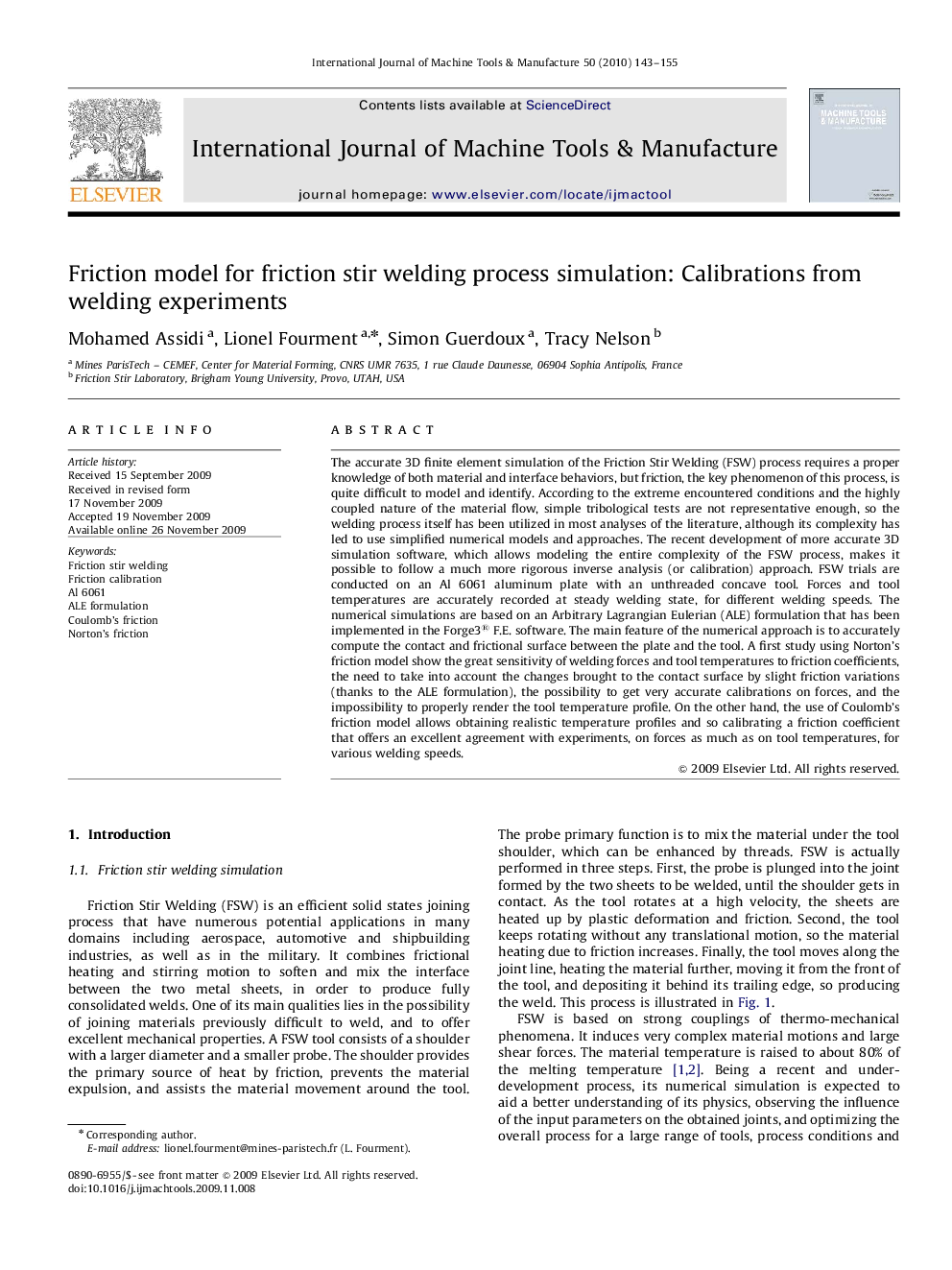| کد مقاله | کد نشریه | سال انتشار | مقاله انگلیسی | نسخه تمام متن |
|---|---|---|---|---|
| 781964 | 1464559 | 2010 | 13 صفحه PDF | دانلود رایگان |

The accurate 3D finite element simulation of the Friction Stir Welding (FSW) process requires a proper knowledge of both material and interface behaviors, but friction, the key phenomenon of this process, is quite difficult to model and identify. According to the extreme encountered conditions and the highly coupled nature of the material flow, simple tribological tests are not representative enough, so the welding process itself has been utilized in most analyses of the literature, although its complexity has led to use simplified numerical models and approaches. The recent development of more accurate 3D simulation software, which allows modeling the entire complexity of the FSW process, makes it possible to follow a much more rigorous inverse analysis (or calibration) approach. FSW trials are conducted on an Al 6061 aluminum plate with an unthreaded concave tool. Forces and tool temperatures are accurately recorded at steady welding state, for different welding speeds. The numerical simulations are based on an Arbitrary Lagrangian Eulerian (ALE) formulation that has been implemented in the Forge3® F.E. software. The main feature of the numerical approach is to accurately compute the contact and frictional surface between the plate and the tool. A first study using Norton's friction model show the great sensitivity of welding forces and tool temperatures to friction coefficients, the need to take into account the changes brought to the contact surface by slight friction variations (thanks to the ALE formulation), the possibility to get very accurate calibrations on forces, and the impossibility to properly render the tool temperature profile. On the other hand, the use of Coulomb's friction model allows obtaining realistic temperature profiles and so calibrating a friction coefficient that offers an excellent agreement with experiments, on forces as much as on tool temperatures, for various welding speeds.
Journal: International Journal of Machine Tools and Manufacture - Volume 50, Issue 2, February 2010, Pages 143–155